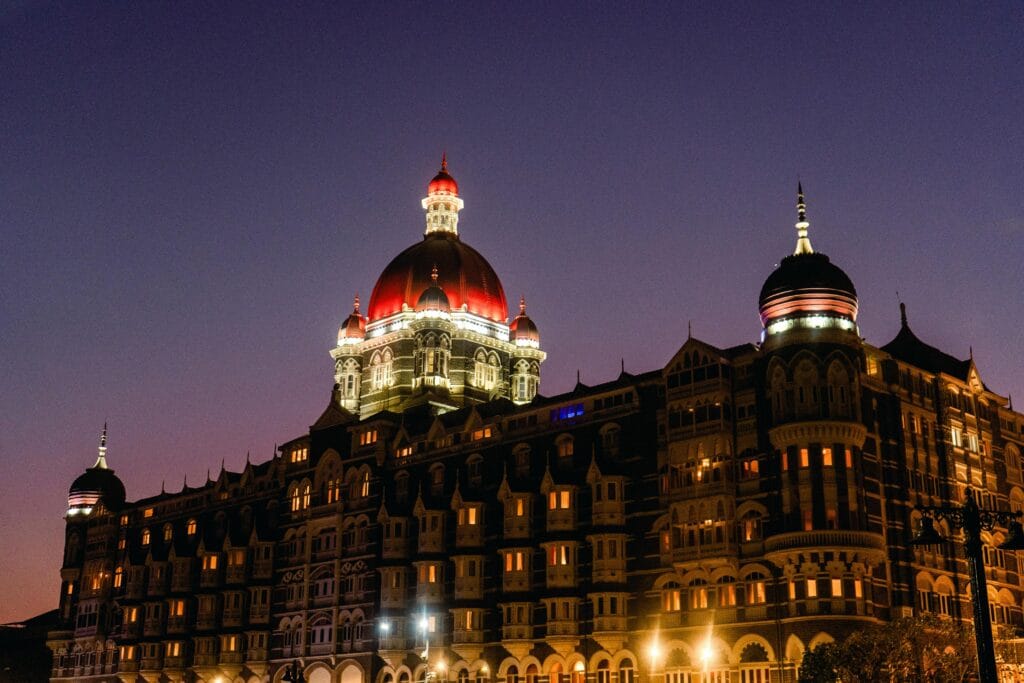Introduction
When you think of luxury hotels in India, one name always comes to mind—Taj Hotels. Known for unmatched service, timeless architecture, and heartfelt hospitality, Taj is more than a hotel chain. It is a symbol of Indian pride, resilience, and world-class excellence.
The story begins with visionary industrialist Jamsetji Nusserwanji Tata, who founded the Indian Hotels Company in 1897. His dream gave birth to the Taj Mahal Palace, Mumbai, in 1903—an architectural wonder that still stands proudly by the Gateway of India. Over the decades, the brand has expanded across India and beyond, transforming into a global leader in luxury hospitality.
The Vision of Jamsetji Tata: Where It All Began
In the late 19th century, Jamsetji Tata was reportedly denied entry into a British-only hotel in Mumbai. Instead of feeling defeated, he decided to create a hotel that would welcome all people regardless of race, class, or background.
On December 16, 1903, the Taj Mahal Palace Hotel, Mumbai, opened its doors—ushering in a new era of Indian hospitality.
🏛 Did you know? The Taj Mahal Palace was the first hotel in India with electricity, American fans, Turkish baths, German elevators, English butlers, and even the city’s first licensed bar.
This pioneering spirit earned Jamsetji Tata the title of the “Father of Indian Industry.” Though he faced criticism—even from his own family—his determination created India’s first true luxury hotel.
Taj Mahal Palace, Mumbai: The Jewel by the Gateway of India
The Taj Mahal Palace quickly became a landmark of heritage and luxury. Its Indo-Saracenic architecture, Italian marble, Belgian chandeliers, and handwoven carpets made it a wonder of its time.
Over the decades, it hosted royals, freedom fighters, presidents, and celebrities—from Barack Obama and The Beatles to world leaders. Beyond glamour, it stood as a symbol of inclusivity and India’s global identity.
Expansion in India: From Palaces to Resorts
The success of the Taj Mahal Palace laid the foundation for a growing empire:
-
1971 – Taj Mahal, Mumbai expanded to 565 rooms.
-
1972 – Acquired Lake Palace, Udaipur and Rambagh Palace, Jaipur → the Taj chain was born.
-
1974 – Opened Taj Coromandel (Chennai) & Fort Aguada Beach Resort (Goa).
-
1976 – Built Fisherman’s Cove (Chennai) & launched the Taj Flight Kitchen.
-
1978 – Opened Taj Mahal Hotel, Delhi.
-
1980s – Expanded with Taj Palace (Delhi), Shiv Niwas Palace (Udaipur), Taj Residency (Bangalore), Connemara (Chennai), West End (Bangalore), Savoy (Ooty), Taj View (Agra).
This expansion redefined Indian hospitality by converting royal palaces into luxury hotels—allowing guests to live like kings and queens.
Going Global: Taj Beyond India
The Taj brand soon went international:
-
1980 – First overseas hotel: Taj Sheba, Sana’a (Yemen).
-
Late 1980s – Acquired Crowne Plaza London, St. James Court & 51 Buckingham Gate Suites (London).
-
1998 – Opened Taj Exotica, Bentota (Sri Lanka).
-
2000s – Added Taj Exotica (Goa), Taj Hari Mahal (Jodhpur), Ginger Hotels, Wellington Mews (Mumbai).
-
2006 – Acquired W Hotel Sydney (renamed Blue Bay).
-
2007 – Entered U.S. market with Taj Boston & Taj Campton Place (San Francisco).
Today, Taj Hotels operate in the U.S., U.K., Australia, Dubai, Maldives, Malaysia, Sri Lanka, Yemen, Zambia, and beyond.
Brand Architecture of Taj Hotels
To cater to diverse travelers, Taj Hotels have developed a portfolio of distinct brands:
-
Taj – Flagship brand of iconic luxury hotels, palaces, resorts, and safaris.
-
SeleQtions – Curated stays offering immersive and unique local experiences.
-
Vivanta – Stylish, upscale hotels for the modern traveler.
-
Ginger – Budget-friendly hotels with smart, digital-first operations.
-
Jiva Spas – Wellness retreats rooted in Ayurveda and Indian healing traditions.
-
Tree of Life & amã Stays & Trails – Boutique resorts and experiential escapes.
-
Taj Air & Taj Yachts – Exclusive travel experiences.
-
Taj SATS Air Catering – Largest airline catering service in South Asia.
-
IHM Aurangabad – Hotel school nurturing future hospitality leaders.
This brand architecture allows IHCL to serve every traveler—from luxury seekers to budget-conscious guests.
Tajness: The Spirit of Hospitality
At the heart of every Taj experience lies “Tajness.”
✨ Rooted in India’s philosophy: Atithi Devo Bhava (Guest is God).
✨ Personalized attention where every guest feels like royalty.
✨ Signature offerings: Michelin-starred dining, butler service, palace stays, wellness retreats.
Tajness is not just about comfort—it’s about creating emotional connections and lifelong memories.
Resilience: The 2008 Mumbai Attacks
On 26 November 2008, the Taj Mahal Palace faced devastating terror attacks. Yet, the bravery of its employees—many of whom sacrificed their lives to protect guests—showcased the true spirit of Tajness.
Within weeks, the hotel reopened, standing tall as a symbol of resilience, unity, and national pride.
Taj Today: Innovation Meets Sustainability
In the modern era, Taj continues to innovate:
-
Eco-friendly operations with renewable energy & waste reduction.
-
Farm-to-table dining highlighting local produce.
-
Luxury wellness through Ayurvedic spas & retreats.
-
Diverse portfolio from palace hotels to Ginger budget stays.
This balance of heritage + innovation keeps Taj at the forefront of global hospitality.
Awards and Global Recognition
Taj Hotels are consistently ranked among the best in the world:
-
World’s Strongest Hotel Brand by Brand Finance (2022 & 2023).
-
Multiple Taj properties listed in the Leading Small Hotels of the World.
-
Recognized for sustainability, service excellence, and luxury experiences.
Why the Taj Hotel Story Inspires
-
Vision with Purpose – Jamsetji Tata’s inclusivity created a global legacy.
-
Heritage with Growth – From one hotel in Mumbai to 100+ worldwide.
-
Resilience through Crisis – Rising stronger after 2008.
-
Global Luxury, Indian Soul – Tajness blends modernity with tradition.
Conclusion
The Taj Hotel story is not just about a building—it’s about vision, courage, and excellence. From Jamsetji Tata’s dream in 1903 to becoming a global luxury powerhouse, Taj Hotels continue to inspire the world.
When you check into a Taj property, you don’t just book a stay—you step into a living heritage of India’s culture, elegance, and hospitality.
-





